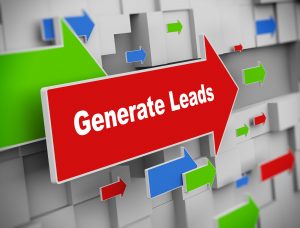What’s the Difference Between Inorganic and Organic Leads?

If we told you which group of leads generates higher traffic volume would that satisfy your curiosity? Hopefully not because there’s more to the story.
Let’s take a look at how both organic and inorganic leads originate. Then we’ll do a comparison between the two.
What Are Organic Leads?
When a web user performs a keyword search on the internet, what gets returned are pages of results. The order in which those results appear reflects what should be every content strategist’s accomplishment—Search Engine Optimization (SEO).
Organic leads find your company’s web page in search results without you paying for advertising. Achieving a successful SEO strategy leads to high visibility and ranking, and naturally increases your volume of organic leads.
The primary objective of an SEO strategy is lead generation. That’s obtained through the high visibility and ranking of your company’s website. If a web user searches for a term related to your business, you want your company website presented at the top of search results.
One promising way of generating relevant traffic of organic leads is through digital marketing channels. These are digital platforms on which you promote your business. They include Search Engines like Google and Bing; Social Media Networks like Facebook, Instagram, and LinkedIn; and good old fashion Email.
For a great example of lead generation tactics check out zellermedia.com.
What Are Inorganic Leads?
Inorganic leads are at the other end of the spectrum. They are the ones you gain through paid advertising rather than a strong SEO strategy. In other words, paying for advertising artificially drives traffic to your web page to improve ranking and visibility.
When a user performs a keyword search the results appear with paid advertising links up top. But if you choose paid advertising, your web page receives prominent placement for a limited time. Once your ad budget depletes your web page drops in ranking based on whatever SEO strategy (or lack thereof) you employ.
Digital Marketing Strategy
Trying one of these marketing strategies does not preclude you from trying the other. It’s possible to lead an organization that works better with a hybrid marketing strategy of SEO and paid advertising.
Here are some highlights of organic leads:
- Organic leads have a genuine interest in your products and services
- Organic leads make you more competitive and view you as a brand expert
- Organic leads result from a cost-conscious approach to marketing
- Organic leads generation requires a long-term digital marketing strategy
Here are some highlights of inorganic leads:
- Inorganic leads are more likely to buy
- Inorganic leads are a targeted group of buyers to whom you market your products and services
- Inorganic leads digital marketing strategy may be cost-prohibitive
- Inorganic leads generation takes less time due to targeted marketing efforts
Organic vs Inorganic Lead Generation
The digital marketing strategy that benefits your business most is the one that works. There are advantages and disadvantages to securing both inorganic and organic leads.
Your short and long-term goals determine which option favours your business strategy best.
Explore more of our blogs for informative content. We’re here to help you get the answers you need.
Leave a Reply